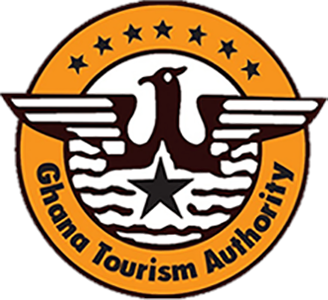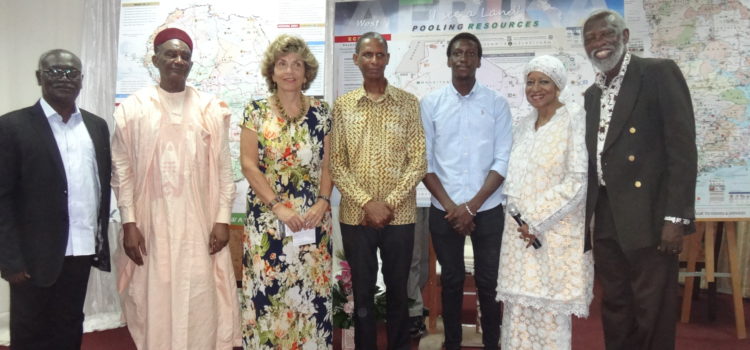New Resource Map Shows Africans and Diaspora Where to Invest
With this year being declared ‘year of return‘ by Ghana’s government, the country is encouraging people of African descent not only to visit but also to invest in the economy. Through business development, import-export businesses, working with local industry and tapping into the country’s resources, people from the diaspora can make an impact in Ghana. The continent of Africa has a resource potential that cannot be denied. For decades the world has been tapping into the continent’s resources without consequence. It’s been said that Africa has much of the world’s remaining resources and it’s the last major region to be fully explored. In the past, it was mainly European and Western countries digging up and exporting the continent’s resources. Today we see China as a major stakeholder taking its opportunity to grab a piece of the African pie.

This is the perfect time to make those in the diaspora aware of the potential investment in Ghana’s natural resources. It was evident through research made by Professor Kwame Addo, a Development Architect, that much of Ghana and Africa’s land still has an abundance of natural resources available.
Professor Addo spent a considerable amount of his time and money researching the resources still available in Africa. He developed a most fascinating map that details all of Africa’s potential laid out by resource. On Tuesday 14th May 2019, he did a presentation at the UDS Guest House in Cantonments Accra, where he revealed three detailed maps that were the result of all his efforts. These maps were of the entire continent of Africa, a close of up West Africa’s resources and a fully mapped out Ghana showing everything from agriculture to minerals based on geographic region.

Dignitaries who were present for the revealing of the maps included Claudia Turbay Quintero, Ambassador, Embassy of Colombia, H.E. Alhousseini Ousmane, Ambassador of Niger, Professor Stephen Adei, Chairman NDPC, and Ambassador Erica Bennett.
Mike Aman-Kwarfo, a Design Consultant and Former Director at GBC, gave his account of when he first met Professor Addo during the 1970s when they were students. Over the years they have developed a strong relationship as friends and colleagues. As an artist, he said that Addo has always been so versatile and he exhausts all the creative elements. So, it’s not surprising that he would create something that would benefit the continent. “This is a man who has crossed cultures in terms of his output in different countries,” he continued praising him until he finally introduced him.
Professor Addo began his presentation by going through Africa’s history using a series of images, graphs and historical information. He touched on the size of Africa’s land mass as compared to other countries using graphics that showed its size relative to America, the U.K, Europe and China. “What are we doing to our continent?” is a question he asked when going through the history of our challenges and how we are in the position we’re in today. “Let’s look at our continent, where all the resources in Africa were before and where they are now.”
Addo began explaining that some of our biggest challenges when it comes to our growth has been trade wars and conflict. Not only that, but communication has also been one of our biggest hindrances. Even though Arabic, Swahili and Hausa are widely spoken languages on the continent, there are so many others spoken that unifying has been a challenge. We should also take note that the colonial division of borders created a formal disconnect that continues today.

With an invitation to the diaspora to return home to Ghana, it presents an opportunity for local Ghanaians to work with them to create opportunities to build and grow the country and continent for the future. When you have people with a vested interest in preserving Ghana while maximizing the output of resources without exploiting the people it puts Ghana in a better position.
This is just the beginning of what’s to come. The maps Professor Addo revealed were exactly what can be used as tools in government legislation when it comes to maintaining control of our resources. “Kwame has taken the time to map out Ghana based on resources…it’s brilliant,” said Professor Stephen Adei, Chairman NDPC. Now that there is a map clearly demarcating what resources we have and where they are located, it’s an opportunity to use it to our advantage and to make is a good negotiation tool. “If you don’t know what you have, you lose in the negotiation,” he continued.

The detailed map of Ghana reveals the fact that Ghana has one of the biggest bauxite resources in the world. It also revealed that Ghana’s biggest deposits of iron ore are in the northeast where there are millions of tonnes.
The Ambassador of Niger gave his remarks in French using a translator to add his thoughts to the conversation. He was very impressed with the presentation and he hopes that the maps are used to benefit the continent.
Everyone shared in excitement about what’s in store for the continent when we use the information on these maps correctly. Professor Addo expressed his concern about whether this information will even be used. He said that we as individuals can contribute to our society. These tools he has provided are just the beginning and the seeds that will bear fruit. This is especially true when we are willing to collaborate with our brothers and sisters in the diaspora.
Written by Ivy Prosper


 Call Center
Call Center

 Call Center: 0307007100
Call Center: 0307007100